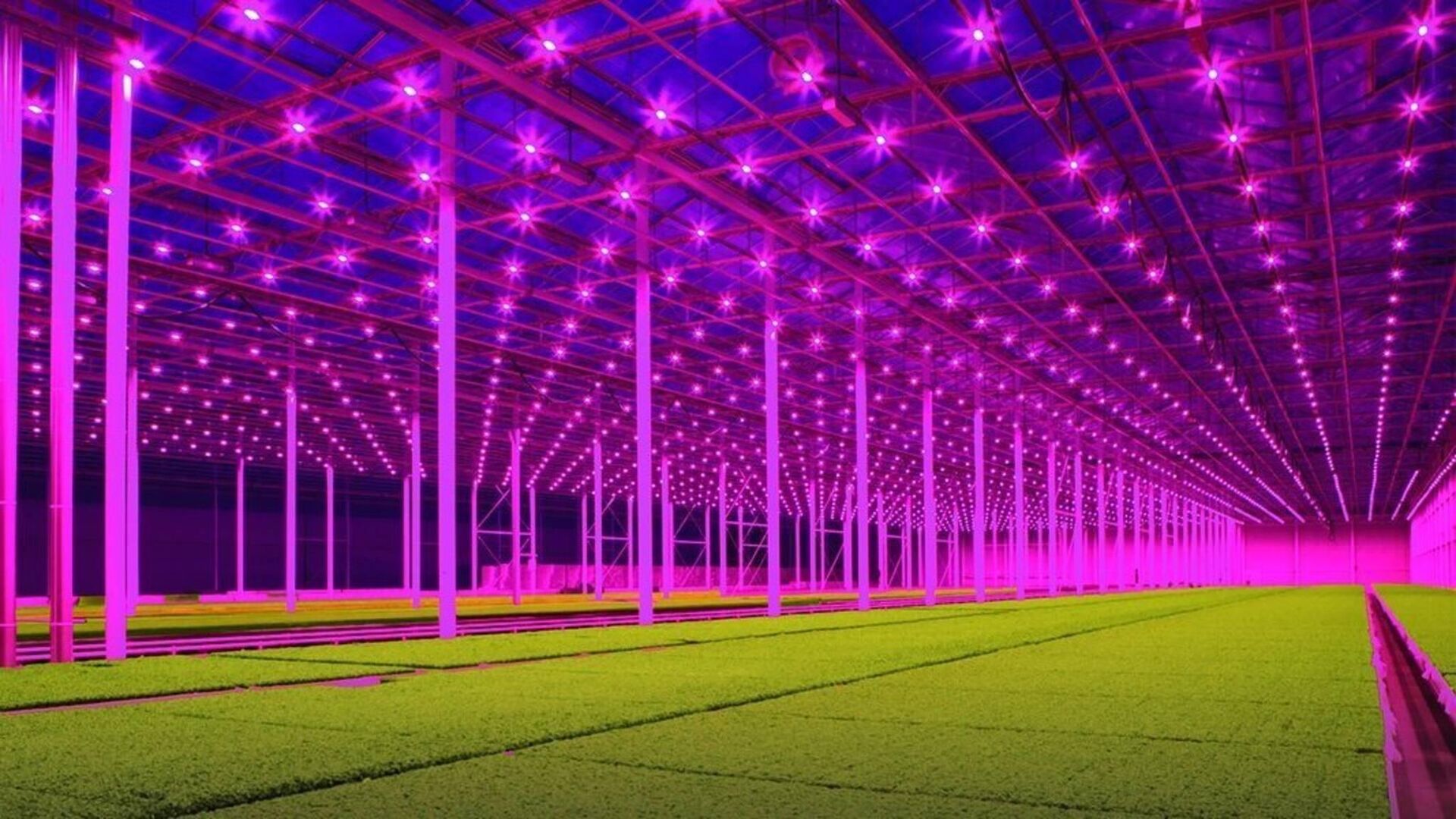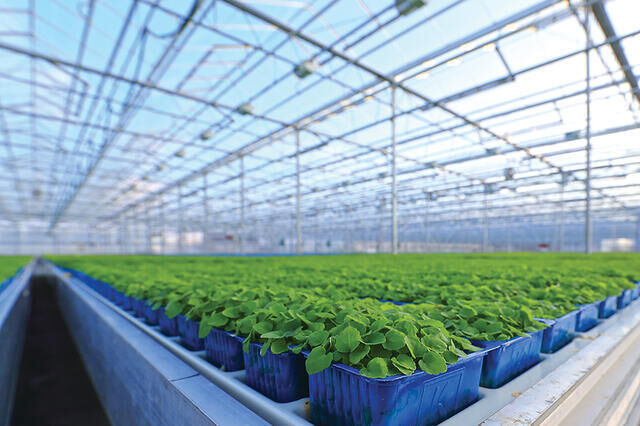”Besides good quality and growth results, the lamps make a positive contribution to the company's sustainability objectives"

Koppert Cress
Since 2010 Koppert Cress is the first company in the Netherlands to work on a large scale with LED fixtures from Oreon. Besides good quality and growth results, the lamps make a positive contribution to the company's sustainability objectives. The heat from the fixtures is stored underground and can be reused in winter to heat the greenhouse.
When talking about sustainability in greenhouse horticulture, the name "Koppert Cress" often pops up. The company from the Westland area in the Netherlands specializes in cresses: micro vegetables with a unique tasting experience. In 2002 the company was taken over by Rob Baan. He changed course radically: Sustainability and marketing became the focus of the company. With success. The company has rapidly grown into an internationally renowned partner for chefs, caterers, hotels and (michelin star) restaurants all over the world.
Example in greenhouse horticulture
“Koppert Cress wants to set an example for other companies in agriculture and horticulture,” explains Stijn Baan. “Everyone is always welcome to come and take a look around. We regularly have guided tours, when colleagues from the sector come to take a look, for example in our sustainable greenhouse. Although our greenhouse may not even be that impressive in terms of surface area, we do try to apply the most innovative technologies in the field of sustainability. We always experiment with our partners and suppliers. You have to offer the space for that and take risks together. "
LED lighting
Koppert Cress has been the first company in the Netherlands since 2010 to work on such a large scale with LED fixtures from Oreon. Owner Rob Baan was convinced that there were better options than HPS to illuminate the crop when sunlight is insufficient and to control it with the different colors of the light spectrum. He got in touch with Oreon and together they developed the first LED fixture for greenhouse horticulture. Long-term tests have shown that cresses mainly need red and a little bit of blue light to grow. Red is the most efficient color to grow a plant and is optimally utilized by the plant. In addition, the plant needs a small amount of blue light to control the shape of the crop. The combination of these two colors results in the "purple / pink" light color that can be seen in the greenhouse.
In addition to good quality and growth results, the lamps make a positive contribution to the company's sustainability goals. The LED grow lights of Oreon are actively cooled with water. The advantage is that the power per fixture can be significantly increased, so less fixtures are needed to achieve the same light level. Thanks to the constant cooling of the LEDs and electronics, the lifespan of the lamps is much longer and the output more consistent over the years. The lamps are small and can be installed under the existing trellies, so the shade is minimized in the greenhouse and optimal use can be made of natural sunlight.
In addition, the heat from the fixtures is stored underground in the heat and cold storage and in this way can be reused in the winter to heat the greenhouse.
"The LED lamps are very efficient and the heat produced can be stored by the unique cooling system and fully reused. For us a solution that perfectly matches our sustainable strategy", says Rob Baan.
CO2 positive
Koppert Cress opened a new greenhouse in May 2019 that is CO2 neutral and is moving towards CO2 positive. This modern greenhouse, equipped with diffuse cover glass and the latest type of water-cooled LED lighting, meets the strict requirements of hygiene and food safety.
“Because of the different types of germ products that we grow, we are concerned about extremely hot summers,” says Baan. “Summers with extreme heat make the germination process difficult. In the new greenhouse we can cool the temperature down to 17 degrees Celsius. That is better for the germination of the cresses. ”
Koppert Cress uses solar energy (solar boilers), heat and cold storage, heat from ditch water and green electricity to heat and cool the greenhouse. With geothermal energy from Warmtecoöperatie Polanen, in which the company is involved, the heat sources must be further supplemented in the summer. By using this heat from the storage in the winter, there is no need to use gas.
Baan: “If this heat cooperative can start supplying geothermal energy in 2021, we can work towards our all-electric goal. We then completely get rid of the gas and can even become CO2 positive. "
Sources: Greenhousemarketeers, Groentennieuws, gf actueel
Pictures: Koppert Cress




Take a look at these Cases of Oreon


